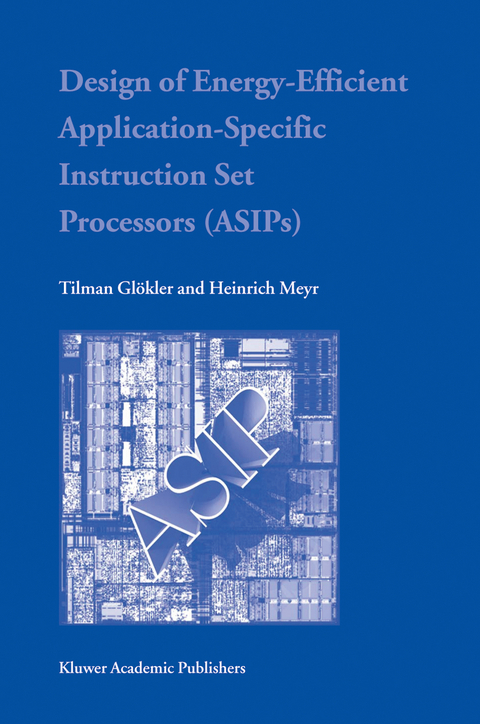Design of Energy-Efficient Application-Specific Instruction Set Processors
Seiten
2004
Springer-Verlag New York Inc.
978-1-4020-7730-2 (ISBN)
Springer-Verlag New York Inc.
978-1-4020-7730-2 (ISBN)
Providing an introduction to low-power VLSI design, this work introduces the design space of ASIP instruction set architectures (ISAs) with a focus on important features for digital signal processing. It contains two case studies that demonstrate the feasibility and the efficiency of the proposed methodology and evaluate the benefits of ASIPs.
After a brief introduction to low-power VLSI design, the design space of ASIP instruction set architectures (ISAs) is introduced with a special focus on important features for digital signal processing. Based on the degrees of freedom offered by this design space, a consistent ASIP design flow is proposed: this design flow starts with a given application and uses incremental optimization of the ASIP hardware, of ASIP coprocessors and of the ASIP software by using a top-down approach and by applying application-specific modifications on all levels of design hierarchy. A broad range of real-world signal processing applications serves as vehicle to illustrate each design decision and provides a hands-on approach to ASIP design. Finally, two complete case studies demonstrate the feasibility and the efficiency of the proposed methodology and quantitatively evaluate the benefits of ASIPs in an industrial context.
After a brief introduction to low-power VLSI design, the design space of ASIP instruction set architectures (ISAs) is introduced with a special focus on important features for digital signal processing. Based on the degrees of freedom offered by this design space, a consistent ASIP design flow is proposed: this design flow starts with a given application and uses incremental optimization of the ASIP hardware, of ASIP coprocessors and of the ASIP software by using a top-down approach and by applying application-specific modifications on all levels of design hierarchy. A broad range of real-world signal processing applications serves as vehicle to illustrate each design decision and provides a hands-on approach to ASIP design. Finally, two complete case studies demonstrate the feasibility and the efficiency of the proposed methodology and quantitatively evaluate the benefits of ASIPs in an industrial context.
Focus and Related Work.- Efficient Low-Power Hardware Design.- Application-Specific Processor Architectures.- The ASIP Design Flow.- The ASIP Design Environment.- Case Studies.- Summary.
| Erscheint lt. Verlag | 29.2.2004 |
|---|---|
| Zusatzinfo | XX, 234 p. |
| Verlagsort | New York, NY |
| Sprache | englisch |
| Maße | 155 x 235 mm |
| Themenwelt | Mathematik / Informatik ► Informatik ► Theorie / Studium |
| Informatik ► Weitere Themen ► CAD-Programme | |
| Technik ► Elektrotechnik / Energietechnik | |
| ISBN-10 | 1-4020-7730-0 / 1402077300 |
| ISBN-13 | 978-1-4020-7730-2 / 9781402077302 |
| Zustand | Neuware |
| Haben Sie eine Frage zum Produkt? |
Mehr entdecken
aus dem Bereich
aus dem Bereich
Buch | Softcover (2023)
Beuth (Verlag)
99,00 €
Einführung in die Geometrische Produktspezifikation
Buch | Softcover (2023)
Europa-Lehrmittel (Verlag)
20,70 €




